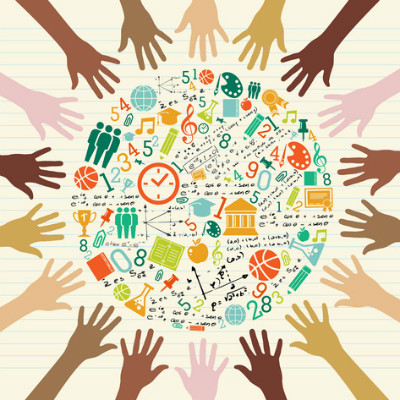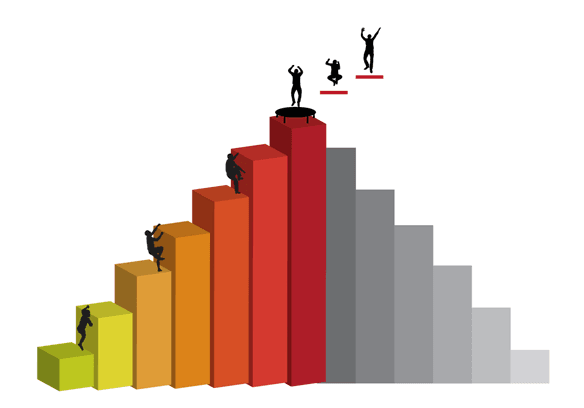In today’s world, we are increasingly hearing calls for global competencies; that is, we are seeing demand for skills such as critical thinking and creativity across both manual and professional occupations. And as a result, education is on the brink of major reform. Countries such as Scotland, Croatia, Guatemala, and the Philippines may have little in common in terms of geography, industry, and socio-economic status, but according to a review of over 100 countries' educational mission statements and goals, they all agree that education should aspire to prepare students to deal with the non-routine in life. In fact, more than 86 percent of the countries studied agree on this point, emphasizing such 21st century skills as problem solving, communication, cooperation, and digital literacy.
There is therefore no doubt about where education is going, but there is a great deal of uncertainty concerning how to get there, and, importantly, how to measure progress along the way.

That’s because this kind of reform is not about adding new subjects; it is about changing our entire approach to information, about recognizing that having content knowledge is insufficient and that we must also understand how it is accessed, stored, managed, retrieved, and manipulated. With fewer predictable, assembly-line jobs available, higher-order capabilities cannot be the reserve of high-achieving students. Teachers will need to pursue dynamic pedagogies and model 21st century skills, and assessments will need to reflect the nature of the skills, and also, in the process, reflect those skills themselves.
Using assessment to promote all learning
Consider: Current assessment practices are frequently based on a normative paradigm where there is an expectation that a small number of students will achieve at peak level, a large group of students will be average, and a pre-determined number will fail. This model has well reflected certain human characteristics and patterns of behavior, and has been an effective winnowing tool in situations in which the environment allows for only a limited number of individuals to progress.
 Assessment doesn’t have to be on a standard curve—let’s shake it up.
Assessment doesn’t have to be on a standard curve—let’s shake it up.
This model is not, however, aligned with the expectations of the Sustainable Development Goals, which call for all children to have access to educational opportunities and to be able to benefit from them (access plus learning). In some contexts, and on some occasions, a pass/fail approach to assessment might be a reasonable strategy. However, where the purpose of assessment is to improve learning outcomes, the pass/fail approach can just lead to further marginalization of at-risk children and youth.
We need assessment approaches that inform and guide children's learning progress, and stay current with the skills and content being taught. To optimize the potential of assessment, conventional perceptions about its use need to change, and the assessment tools themselves need to be designed to generate usable data for and relevant to all children. This requires designing assessments that capture all children's capabilities within the range of what is being taught, which requires going beyond simply gauging whether a correct or incorrect answer has been achieved.
Has the child got the method right? Have they moved through some steps of a process but just not managed all? As we focus increasingly on skills as well as content, it is the steps that students are taking that we need to capture and note so that we can guide them securely to the next step—not just send them right back down to the bottom as a result of a pass/fail dichotomy.
We are as such interested in children's development of skills, which means that every step forward is a learning step to be noted. We also need assessment technologies that can help us capture these steps. Adaptive testing marked a first step in use of such technologies, where, based on a student response to one test item, that student was presented with another item, appropriately targeted so that the student’s response would provide more information about his or her range of understanding. Ultimately, all students did not complete the same items, and as a result, all students were more accurately assessed in terms of their real capabilities.
Skills, not scores
The assessment tools that we need for the future must be designed to provide performance information in language that describes that performance. Rankings and grades don't provide this information, and importantly tell neither student nor parent what the student has learned and is ready to learn. When assessments are designed to tap into skills across a range of performance, then those assessments’ descriptions of skills levels provides accessible information that supports instruction.
Twenty-first century education is about skills—sets of processes. Our students need to be able to adapt to contexts, meet challenges, and solve problems that are as yet unknown. Our best chance at helping them succeed is to thus use assessment to support their learning about the sets of processes that they will bring to bear in those situations. Let’s focus on the skills, not the scores.
Support SSIR’s coverage of cross-sector solutions to global challenges.
Help us further the reach of innovative ideas. Donate today.
Read more stories by Esther Care & Alvin Vista.

